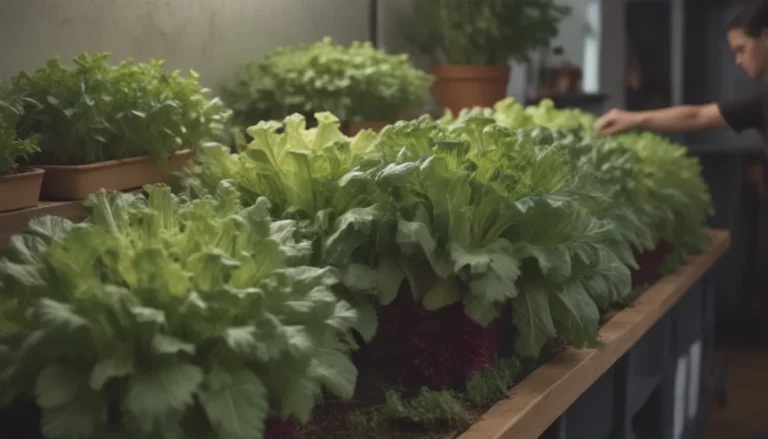The Ultimate Guide to Growing and Caring for Papyrus Plants

Are you looking to add a touch of ancient Egypt to your garden or home? Look no further than the majestic papyrus plant, native to the marshy borders of the Nile River. With its tall, stately appearance and unique triangular stem, papyrus is sure to make a statement in any landscape. But how do you ensure that your papyrus plant thrives and flourishes? In this comprehensive guide, we will walk you through everything you need to know about growing and caring for papyrus plants.
Getting to Know Papyrus
Before we dive into the care requirements, let’s take a closer look at the papyrus plant itself. Here are some key characteristics of this fascinating plant:
- Native to the marshy borders of the Nile River in Egypt
- Can grow up to eight feet in height
- Part of the sedge family
- Primarily valued as a foliage plant
- Classified as a perennial but can be grown as an annual in cooler climates
Papyrus Care Tips
Now that you have a better understanding of what papyrus is all about, let’s talk about how to care for it properly. Here are some essential care tips to help your papyrus plant thrive:
Light
- Papyrus plants prefer full sun but can tolerate part shade, especially in very hot climates.
Soil
- The soil needs to be fertile and well-draining.
- Amend nutrient-poor soil with compost or other organic matter before planting.
- Papyrus grows best in wet, boggy soil such as swampy areas or around landscape ponds.
- Maintain a pH between 6.0 and 8.0.
Water
- Papyrus is a marginal aquatic plant that grows in shallow bodies of water.
- Make sure to keep the soil consistently moist, especially if it is not naturally wet.
- When planting papyrus in a body of water, only submerge the root ball, not the crown.
- Consider elevating the containers to prevent the plant from toppling over.
Temperature and Humidity
- Papyrus is native to northern Africa and thrives in USDA hardiness zone 9 and above.
- In cooler climates, papyrus is often grown as a potted plant or as an annual.
Fertilizer
- If planted in rich, fertile soil, papyrus plants usually do not require additional fertilizer.
Types of Papyrus
There are several types of papyrus plants available, each with its own unique characteristics. Some popular varieties include:
- Cyperus papyrus ‘King Tut’
- Cyperus papyrus ‘Prince Tut’
- Cyperus papyrus ‘Nanus’
- Cyperus involucratus ‘Baby Tut’
- Cyperus prolifer ‘Queen Tut’
Pruning and Propagating Papyrus
To keep your papyrus plant looking its best, consider the following tips for pruning and propagating:
Pruning
- In zones where papyrus is a perennial, cut back the foliage to ground level in the fall or early spring.
- If grown as an annual, remove the entire plant and discard it in the fall.
- Trim brown foliage to encourage new growth.
Propagating
- Divide the plant in early spring to keep it vigorous and propagate it at the same time.
Growing Papyrus From Seed
Papyrus can also be grown from seed, but it is best done in pots rather than through direct sowing. Follow these steps for successful seed propagation:
- Plant seeds in containers filled with potting mix.
- Keep the soil consistently moist.
- Transplant seedlings once they have established roots.
Potting and Overwintering Papyrus
For those growing papyrus in containers, here are some tips for potting and overwintering:
- Choose a container with good drainage and fill it with rich potting mix.
- Repot as needed or divide the plant into smaller sections.
- Overwinter potted papyrus plants indoors if temperatures drop below 40 degrees F.
Common Pests and Plant Diseases
While papyrus plants are generally resilient to pests and diseases, they can be affected by rust fungus. Look out for spots and discoloration on the leaves and stems and treat promptly if necessary.
Growing Papyrus Indoors
If you prefer to grow papyrus indoors, follow these tips for success:
- Choose a small variety such as Cyperus alternifolius (umbrella plant).
- Provide plenty of sunlight and keep the soil moist.
- Consider setting the pot in a dish of water to allow the plant to draw moisture as needed.
With these care tips and guidelines, you can now confidently grow and care for papyrus plants in your garden or home. Whether you are a seasoned gardener or a beginner plant enthusiast, papyrus is sure to add a touch of exotic elegance to your space. Happy planting!





